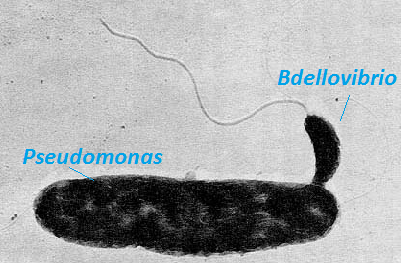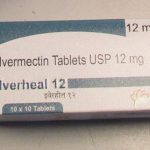Our guts are home to hundreds of microbial species (collectively called the gut microbiota) that are essential for normal digestion and immunity. What species are present and in what proportions can impact our ability to fight off pathogens, as well as our risk for obesity, metabolic disorders, and allergies. In fact, certain bacteria that can be introduced as probiotics or through fecal transplants have been proposed as cures for a plethora of different pathologies. The revelation that we depend heavily on the microbes within us for our health has made the use of antibiotics controversial. Antibiotics, or drugs that kill bacteria, tend to be indiscriminate, killing the bacteria that make us healthy along with those that make us sick. The rise of antibiotic resistance among common pathogens doubly underscores the need for new treatment options. This has led scientists to ask, “how can we kill bacterial pathogens while avoiding ‘throwing the baby out with the bathwater’?”
Bacteria such as those that cause staph, strep throat, and cholera are parasites, meaning they live within a host and steal its resources. All five kingdoms of life (animals, plants, fungi, protozoa, and bacteria) contain innumerable parasitic species, and all viruses require a host to reproduce. Most species on Earth are plagued by parasites – this includes organisms that are themselves parasites (live by the sword, die by the sword). Indeed, hyperparasites, or organisms that parasitize other parasites, are more common than one might think. Rhinotrichella globulifera, a fungus, has been observed parasitizing another fungus, in turn parasitizing yet another fungus, parasitizing a tree! Such interactions seem bizarre to us, yet they occur all around us, and even inside us, all the time.
For example, bacteria, including those that live in and on us, are themselves hosts to a plethora of viruses, called bacteriophages. Bacteriophages and other bacteria-killers may hold the key to vanquishing these treatment-resistant bacteria. As a rule, parasites specialize on one or a few host species, and since many bacteriophages only infect a few strains of a single bacterial species, these viruses represent a safer potential alternative to antibiotics. A recent study identified several common strains of a pathogenic bacterium, Klebsiella pneumoniae, as determinants of risk for inflammatory bowel disease (IBD). No treatment options currently available would adequately solve this problem. The authors proposed a cocktail of bacteriophages that could kill these specific strains. This treatment alleviated intestinal inflammation in animal models and preliminary human trials.

In addition to bacteriophages, some organisms may be leveraged to treat infections, including bacterial parasites of other bacteria. For instance, Bdellovibrio is a group of bacteria that burrow into and kill Vibrio species, which cause cholera and other serious human diseases. Since antibiotic resistance is emerging in Vibrio, their bacterial parasites might be used as therapeutic agents in the future. Besides parasites, predators of bacteria, or organisms that hunt and eat them (think lions predating antelopes) might also prove useful in the fight against bacterial pathogens. Some bacteria like Staphylococcus aeureus, the causative agent of staph, evade the immune system and antibiotics by forming aggregates called biofilms. Dictyostelium, or a group of bacteria-eating amoebae, are able to penetrate biofilms and eat the bacteria within. Parasitic microbes may even be used to treat non-infectious diseases: certain bacteria and viruses have been engineered in the laboratory to attack cancer cells. One such virus, a modified herpes virus, can specifically destroy cancer cells without harming healthy cells and helps the immune system recognize cancer. It is FDA-approved for treating melanoma.
When most people think of microorganisms, they think of scourges like malaria and tuberculosis, but in fact, only a tiny sliver of all microbial species are capable of making us sick. Many are actually important to our survival, while most have no direct effect on our health at all. Some parasites of other species even benefit us by suppressing pest populations. Our ability to study and even manipulate these phenomena in the lab by genetic engineering and other methods is constantly strengthening and may someday be used against pathogens that have evolved resistance to other treatment approaches: to fight fire with fire.
About the Author
Benjamin Phipps is a PhD candidate in the Department of Genetics at UGA. He studies factors that influence mosquito fecundity and malaria infection with Dr. Michael Strand. When he is not in the lab, Benjamin enjoys classical music, scary movies, and Latin American literature. He can be reached at benjamin.phipps@uga.edu.
- Benjamin Phippshttps://athensscienceobserver.com/author/benjamin-phipps/
- Benjamin Phippshttps://athensscienceobserver.com/author/benjamin-phipps/
- Benjamin Phippshttps://athensscienceobserver.com/author/benjamin-phipps/








